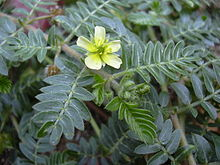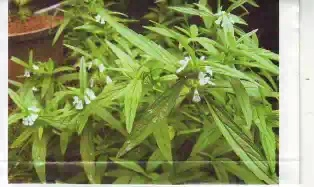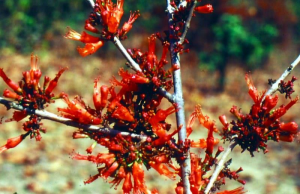Table of Contents
Jambu – Szygium cumini Linn – Ayurvedic Herb
Jambu is mentioned among the trees used for the rituals(kou.su 8/15) . It is repetadely quoted by vedic literature Asia known as ‘Jambu Divpa’ is probably named because of its abduance in the area continent. In Bhavaprakasha Nighantu it is mentioned as phalendra. It is Swadhu rasa yutha. It can be used as kaphapittasradahajith.
- In Dhanwantri Nighantu it is mentioned as surabhipatra. It is swadu and Amla rasa yutha.
- Caraka described it as the best among the substances which aggravates vata.
“jambu vatajananan(shresta)|
(ch.su 24)
VARIETIES
5 Varieties are mentioned
- Jalajambu – Eugenia heyneana wall
- Ksudrajambu
- Kakajambu
- Bhumijambu – Eugenia operculata roxb
- Gulaba jambu – Eugenia jambos roxb
SYNONYMS AND INTERPRETATIONS
- Phalendra : The fruits are considered as best fruit or king of fruits.
- Raja Jambu : The fruits are bigger in size
- Mahaphala : The fruits are large in size
- Surabhipatra : The leaves have pleasant odour
- Maha jambu : Bigger varities of fruits
- Jambu : The fruits are edible
- Mahaskanda : The tree having a big trunk
- Neela phala : The fruits are blue in colour
- Maharasa : Fruits are profusely sapy.
- Medamodini : Fruits are borne during rainy season
- Neelajanachanda : The fruits are bluish in colour
VERNACULAR NAMES
English – Jambul , black berry, black plum
Hindi – Jamun
Punjabi – Jamulu
Marathi – Jammul
Gujarathi – Jambu
Telugu – Neredu chettu
Kannada – Nerale
Malayalam – Naval
Tamil – Shambu
Sanskrit – Jambu
Beng – Kala jam
PARTS USED
- Fruits
- Fruits seed(stone)
- Bark
- Leaves
DOSAGE
- Powder – 1-3 gm
- Juice – 20-40 ml
- Decoction – 50-100ml
FORMULATIONS
1.Jambvadya Taila
Refernce –Bhava prakasha
Indication – Upadamsajanya vrnas
2.Nygrodhadi churna
Reference –Cakradatha
Indication –Prameha & Dysuria
3.Jambupallavadi Kvatham
Reference –Yogarthnakara
Indication –Atisara
4.Panchapallava Yoga
Reference-Bhaishajyaratnavali(jvara cikitsa prakarana chapter 5)
CHEMICAL COMPOSITION
Jambolan is rich in compounds containing anthrocyanins, glucoside, ellagic acid, isoquercetin , kaemferol and myrecetin .
Leaves – The leaves are rich acylated flavonol glycosides, quercetin, muricetin, myricitin, myricitin, esterase, tannin.
Stem bark – The stem bark is rich in betulinic acid friedelin, epi friedlanol , Beta sitosterol, eugenin and fatty acid ester of epi-friedelanol.
Flowers – The flowers are rich in kaempferol, quescetin, myricetin, isoquescetin, oleanolic acid.
Roots – The roots are rich in flavonoid glycosides and isorhamnetin 3-0-rutinoside.
Fruits – The fruits are rich in raftinose, glucose, fructose, citric acid, mallic acid, gallic acid, anthocyanins, cyanidin diglycoside glucose, petunidin, malvidin.
PROPERTIES AND DOSHAGNATHA
Rasa : Kasaya , Madura , Amla
Guna : Lagu , Ruksa
Virya : Sita
Vipaka : madhura
Doshakarma : Kapha – pitta samaka, Vatajanana
KARMA
- Mutrasangrahaniya
- Madumehari
- Stambhana
- Dahaprasamana
- Dipana – pacana
- Yakrduttejaka
- Raktasmbhana
PRAYOGA
- Chardi
- Stambana
- Atisara
- Madhumeha
- Rakthatisara
- Grahani
- Agnimandya
- Prameha
- Sula
- Vrana
- Upadamsa
THERAPEUTIC USES
- Raktapitta :-
Cold infusion of Jambu, Amra and Arjuna shall be given (S.S.ut.45)
- Grahani :- (in children)
Juice from jambu bark is given with equal quantity of goat’s milk (C.D)
- Vyanga :-
Leaves of jambu, Amra, Haridra, Daruharidra & fresh jaggery are pounded with curd-water and applied locally (A.H.at.32)
- Atisara :-
A liquid preparation made with the seeds of Jambu, Amra, Bilva, Kapitta & Sunthi are given
- Chardi :-
The leaves of Jambu & Amra given mixed with Madhu.
- Stambana :-
The twak kasaya is useful.
PHARMACOLOGICAL ACTIONS
Different part of the Jamolan especially fruits, seeds, & stem bark possess promising activity against diabetes mellitus and it has been confirmed by several experiments & clinical studies.
- Tea prepared from leaves of jambolan was reported to have anthiyperglycemic effects.
- The stem bark of the plant could induce the appearance of positive insulin staining cells in the epithelia of the pancreatic duct of treated animal and a significant decrease in blood glucose levels who also observed in mice treated with the stem bark by oral glucose tolerance test.
- Different parts of the Jambolan Especially fruits & seeds possess promising activity against diabetes mellitus.
FOLKLORE USES
- Either infusions or decoctions of leaves of Jambolan in water at an average concentration of 2.5g/L and drank in place of water at a mean daily intake of about 1 ltr are used in the treatment of diabetes.
- Two teaspoon of juice extracted from the leaf is mixed with honey or cow’s milk & taken orally, taken twice a day after food for 3 months to treat diabetes.
- Fruit & stem bark is taken orally three times a day for 2-3 weeks to treat diabetes.
- The juice obtained from the bark is given orally for the treatment of women with a history of repeated abortion.
- The juice or ripe fruits is stored for 3 days and then is given orally for gastric problems.
RESEARCH STUDIES
- Anti-diabetic property –(1) fresh powdered seed was found to lower the level of blood sugar in diabetic rabbits (vaish, 1954)
- The fruit and seeds were found to be promising hypoglycaemic agent.
( Aiman, 1961)
- The aqueous extract of seeds of the plant produced 15-25% fall in fasting blood sugar in four to five hours after giving a single dose orally(Shrothri 1963).
- Hypoglycaemic activity of E.Jambolana leaves is also reported ( Arabab etal 1999).
- In non –diabetics, fruit pulp induced small but statistically significant fall in blood sugar at 3 hr. Whereas in diabetic patients a small increase in blood sugar level was observed following fruit pulp ingestion (J.Res Ay.& Siddha 1983, 1941)
ECOLOGY
Widely distributed from ever green to mosit deciduous forest across western ghats & plains and often planted as evnue tree
Soil – Deposite its ability to thrive in low, wet areas the tree does well on higher, well-drained land whether it be in loam, marl, sand or oolitic limestone.
Climale – The Jambolan tree frows well from sea –level of 6000ft but, above 2000 ft it does not fruit but can be grown for its timber. Dry weather is desirable during the flowering & fruiting periods.
Temperature – The Jambul grows well when the absolute maximum shade temperature is in the range of 25 deg C to 17.5 deg C in areas where it is normall found. Jambul grows in areas where the mean maximum temperature during May, range a low of 30 deg C to a high of 43 deg C. The mean minimum temperature in January, such areas range from a low of 5 deg C to a high of 23.9 deg C.
CULTIVATION AND HARVESTING
Syzgium cumini Linn grows best in the topics at elevation upto 600m, although it can found as 1800 m . In the latter case, it does not fruit can be grown from its timber. It well in region with over 100mm annual rainfall with a distant dry season, cumini grows on river banks & can with stand prolonged flooding.
Harvesting:-
In India, the fruits are harvested by hand as they ripen & this requires several picking over the season. Indian horiculture have reported a crop of 700 fruits from a 5 year old tree. The production of a large tree may be overwhelming to the average homeownes.
OTHER THAN MEDICINAL USES
Nectar – The Jambolan tree is of real value in apiculture. The flowers have abundant nectar and are visited by bees throughout the day.
Leaves – The leaves have served a foddes for livestock and as a food for tassar silkworms in India. In Zanzibar and pemba, the natives use young jambolan shoots for cleaning teeth.
- The essential oil distilled from the leaves is used to scent soap & is blended with other materials in making in expensive perfume.
- Bark contains 8-19% tannin and is much used in tanning leather and preserving fishing nets.









